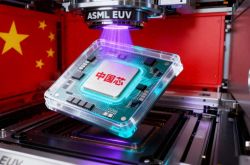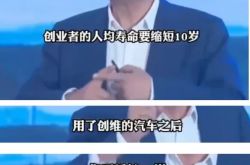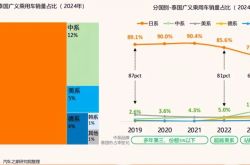Seres: Navigating Growth and Transformation
![]() 11/03 2025
11/03 2025
![]() 386
386
Author | Xi Zhi
Editor | Wang Pan
Seres has recently unveiled its latest quarterly financial report. During the first three quarters of this year, Seres has demonstrated rapid growth across several key metrics. It achieved a revenue of 110.534 billion yuan, marking a 3.67% year-on-year increase. Moreover, the net profit attributable to shareholders of the listed company reached 5.312 billion yuan, soaring by 31.56% compared to the same period last year.
The gross profit margin is particularly noteworthy. Calculations reveal that Seres' gross profit margin for the first three quarters stood at 29.37%, and it further rose to 29.5% in the third quarter. This performance enables Seres to continue outpacing its peers in the new energy vehicle sector and further widens the gap with overseas luxury brands such as BBA and Porsche.
However, there is a drawback in the form of a declining trend in Seres' net profit. In the third quarter, Seres reported a revenue of 48.13 billion yuan, a 15.75% year-on-year increase. Yet, its net profit was 2.371 billion yuan, representing a 1.74% year-on-year decrease. Similarly, the net profit after deducting non-recurring items was 2.293 billion yuan, down by 1.39% year-on-year.
Previously, the market had anticipated Seres' full-year net profit to reach 9.92 billion yuan. The decline in the third quarter has sparked concerns among investors regarding the sustainability of the company's profit growth. This was directly reflected in the capital markets, as Seres' stock price took a nosedive of nearly 5% on October 31.
A Rational Decline
From a long-term perspective, the decline in Seres' profit growth is not necessarily a negative development; rather, it can be seen as a "necessary" adjustment.
According to the financial report, Seres has witnessed high growth in its costs for research and development (R&D), sales, and management. In the first three quarters, R&D expenses and sales expenses amounted to 5.06 billion yuan and 15.99 billion yuan, respectively, both showing year-on-year increases of around 15%.
Financially, these costs do exert a drag on profits. Nevertheless, in the fiercely competitive market, they are indispensable measures for Seres to enhance innovation and uphold its premium brand image.
Over the past two years, Seres has shifted its focus towards technological R&D, with the aim of improving product competitiveness and establishing its own technological barriers to break free from Huawei's "comfort zone." From the World Intelligence Expo held in September, it is evident that Seres has made significant strides in intelligence.
For instance, its self-developed Magic Cube technology platform is the first full-stack platform that is compatible with three powertrain forms: extended-range, pure electric, and hybrid. This platform enhances the flexibility of product design and accelerates the speed of service iteration.
The new-generation Seres Super Extended-Range System also excels in terms of quietness and fuel efficiency. It can generate over 3.65 kWh of electricity per liter of fuel, which is a key advantage for AITO products.
The increase in sales costs reflects intensified brand promotion and channel expansion efforts, with a particular emphasis on enhancing user service capabilities. This is a cornerstone for AITO's continuous upward trajectory. According to Jielanlu's "2025 Mid-Year New Energy Vehicle Brand Health Study," the AITO brand ranked first in brand development confidence for the first half of 2025. Moreover, the AITO M9 topped the overall Net Promoter Score (NPS) list for new energy vehicle models, scoring an impressive 85.2.

As one investor aptly put it, users' demands for AITO's services and profit growth are essentially contradictory. They expect helicopters to rescue owners in remote areas, freshly ground coffee beans and gourmet meals at AITO centers, while simultaneously complaining about profits falling short of expectations.
Overall, R&D and sales costs are not merely a burden on profits; they are crucial for maintaining brand and product competitiveness. They represent a strategic pause in Seres' rapid growth.
Still in Need of Continuous "Capital Infusion"
While Seres leads in profits, its "leverage" is equally high, with a high debt ratio being another cause for concern.
Over the past two years, Seres' asset-liability ratio has exceeded 85%, making it the most indebted automaker in the A-share market. Although this ratio narrowed to 76% in the first three quarters of this year, it still remains higher than that of most automakers, which is not a healthy sign.
This has kept Seres under constant pressure to secure "capital infusions." Fortunately, its upcoming listing on the Hong Kong Stock Exchange will provide significant relief, and this initial public offering (IPO) holds even greater significance for Seres.
On November 5, Seres will officially list on the Hong Kong Stock Exchange, becoming the first new energy vehicle company to achieve dual A-share and Hong Kong share listings. During the subscription period, Seres received an overwhelming response from investors. Its IPO public offering, which closed on October 31, saw financing subscriptions exceed 120 billion Hong Kong dollars, with the public offering portion receiving approximately 218 times oversubscription.
In terms of fund usage, 70% of the proceeds will be allocated to technological R&D. Firstly, the Magic Cube platform architecture will be upgraded to enhance compatibility and energy efficiency. Secondly, investment in intelligent driving algorithms and HarmonyOS cockpit systems will be increased to advance the mass production of high-level autonomous driving. Thirdly, the development of next-generation electric drive and extended-range systems will be pursued, with the expectation of deploying them in new models starting in 2025.
Seres also has its sights set on globalization. This Hong Kong listing aims to establish a more open valuation system, expand financing channels, attract international capital, and further optimize its financial structure. More importantly, it supports Seres' globalization strategy. While Seres' current overseas product sales are promising, the scale of a few tens of thousands of units annually is far from sufficient to sustain this "second growth curve." The Hong Kong listing will help connect with global resources and further enhance Seres' international influence.
However, the Hong Kong IPO will not fundamentally resolve Seres' high debt ratio in the short term. The lack of liquidity and reliance on payment terms remain looming risks. As Seres strives to balance technology, services, and profits, it must continuously study how to maintain equilibrium while "sprinting."
Betting on an "Independent" New Growth Curve
If heavy investment in technological R&D is the first step to reduce "Huawei dependence," then Seres' collaboration with ByteDance on embodied AI represents a more long-term strategy.
As the "Jie" (AITO) brand lineup continues to expand, Seres is transitioning from Huawei's "only" partner to "one of many." While AITO remains Huawei's undisputed flagship, its access to Huawei resources is inevitably being diluted.
Self-reliance has become a necessity for Seres. Recently, its subsidiary, Chongqing Fenghuang Technology Co., Ltd., signed an "Embodied AI Business Collaboration Framework Agreement" with Volcano Engine, a subsidiary of ByteDance. The two parties will collaborate on the project titled "Intelligent Robot Decision-Making, Control, and Human-Machine Augmentation Technology for Multi-Modal Cloud-Edge Collaboration."
Choosing ByteDance as a partner for its second growth curve reflects Seres' different strategic considerations.
In the automotive sector, Seres previously prioritized "stability," with Huawei's strong brand and complete industrial chain serving as a reliable foundation. However, in the uncertain new field of embodied AI, Seres needs openness and aggressiveness, making ByteDance a more suitable partner.
This is Seres' next major gamble and its greatest hope for breaking free from the "traditional automaker model." The challenge lies in the fact that embodied AI is a far more difficult and capital-intensive field than automotive. On the optimistic side, Seres has sufficient resources to stay in the game for the long haul.
Seres is currently pursuing a "multi-pronged" strategy. Firstly, it is deepening its partnership with Huawei through capital injections into HiAlpha. Secondly, it is opening doors to globalization through its Hong Kong listing. Thirdly, it is creating a new narrative by betting on embodied AI. While the domestic automotive market may be approaching its ceiling, Seres still has ample room for imagination.








